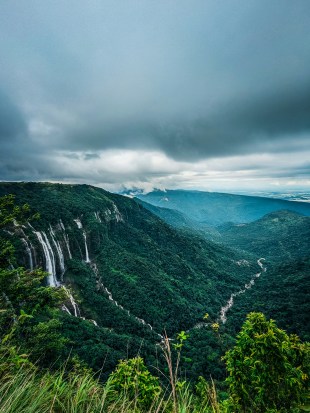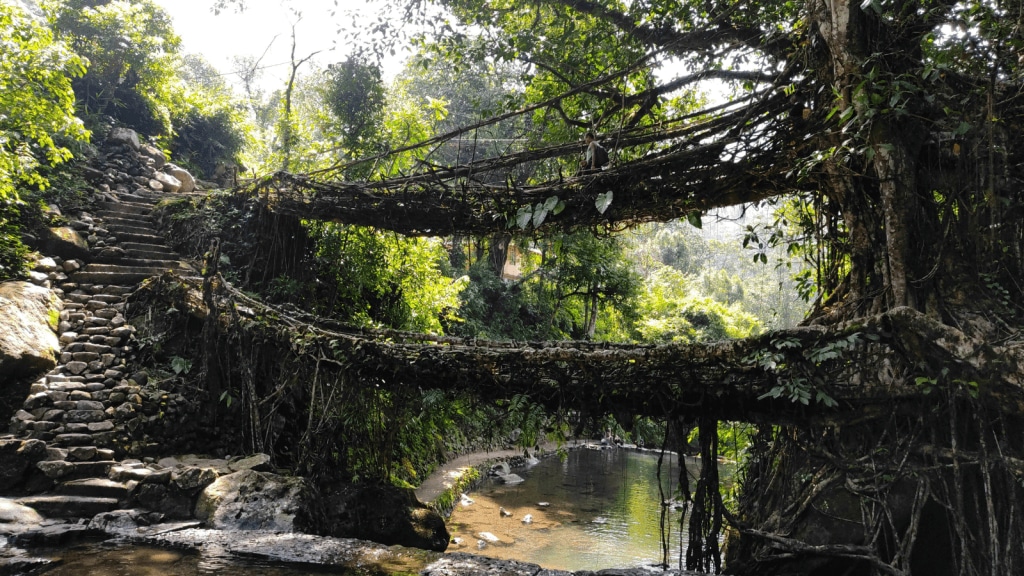Tucked away in the mist-shrouded highlands of Northeast India, Meghalaya reveals itself not from the window of a car, but on foot. To walk here is to slow down to the rhythm of the hills, to hear the hush of pine forests and the laughter of rushing streams, to feel the living pulse of Khasi culture. Across this ancient plateau, a network of community-led trails now invites travellers to step into the heart of local life — guided by villagers who know every bamboo bridge, every monolith, every legend whispered through the fog.
These trails — many of them revived under community-based tourism initiatives — weave through some of Meghalaya’s most enchanting landscapes. In the sacred groves of Mawphlang, a forest that has stood untouched for centuries under the guardianship of the Khasi deity Labasa, local custodians lead visitors beneath a cathedral of trees. They tell stories of how every leaf and stone within is protected, how rituals once performed here kept the balance between man and nature. Walking softly over a carpet of moss, you begin to understand why the Khasis say that spirits dwell in these woods — and why cutting even a fallen branch was once unthinkable.
Further south, the trails of Sohra and Nongriat test both stamina and wonder. Here, stone stairways descend into humid valleys where rivers gleam and clouds hang low. Local guides lead trekkers across living root bridges — marvels of bioengineering woven by generations of Khasi villagers using aerial roots of the Ficus elastica tree. Each bridge, some over a hundred feet long and centuries old, is a living testament to the community’s harmony with nature. The double-decker bridge of Nongriat, in particular, feels almost mythical: part sculpture, part path, and entirely alive.

In the West Khasi Hills, bamboo walkways and ancient monolith fields open to panoramic views of rolling meadows and waterfalls. Trails near Mawlyngbna and Mawsynram reveal limestone caves and fossil beds, where guides recount the region’s geological history alongside folk tales of serpents, deities, and ancestral spirits. These walks are never just about reaching a destination; they are acts of storytelling and continuity, where the land itself becomes a living archive.
What makes these community trails truly special is the way they empower local custodians. Villagers trained as guides, homestay hosts, and conservation stewards are reinterpreting tourism on their own terms — ensuring that both visitors and landscapes are treated with respect. Trek fees often go toward maintaining paths, protecting forests, and supporting village schools, making every step a small contribution to sustainable livelihoods.
To walk with the Khasis, then, is to move through more than just terrain. It is to witness a way of life shaped by reverence — for nature, for heritage, and for the stories that bind them. In a world where travel often feels hurried and extractive, these community trails remind us of another path: one that treads lightly, listens deeply, and leaves only footprints softened by rain.


